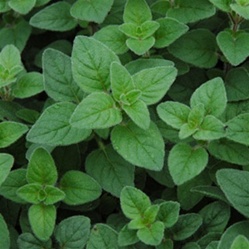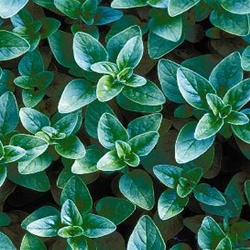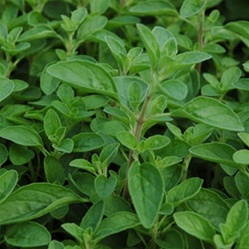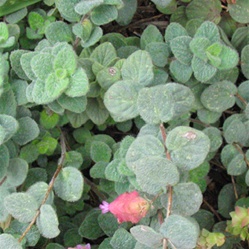If you love Italian food, you probably love Oregano as much as we do, but there is a lot of confusion over this spicy herb. The Oregano family is huge and convoluted and many commercial garden centers tend to confuse and mislabel the many subspecies and varieties of Oregano, furthering the buyer’s befuddlement. Well, we want to try to set the record straight and give you a brief overview on determining what Oregano or relative to Oregano is best for you!
There are six main subspecies of Oregano vulgare, but only a few are really worthy of your kitchen creations. Let’s take a look at the ones we grow:
Italian Oregano
Origanum x majoricum
This hybrid cross of Origanum vulgare and Origanum majorana lends the hardy nature of the vulgare and the sweeter scent of the majorana to create a bold culinary herb. Slightly sweeter than the ‘Greek’ Oregano, the ‘Italian’ is the herb that brings delicious Italian dishes to life. Popularized after World War II when soldiers brought their love of Italian cuisine home with them from overseas, the ‘Italian’ Oregano became the quintessential pizza herb. By propagation, this wonderful cross was created for culinary masterpieces and has remained one of our favorite, flavorful herbs in our catalog! Perennial in Zone 7, ‘Italian’ grows to about 18″ and has purple blooms.
Greek Oregano
Origanum heracleoticum
‘Greek’ Oregano is a bold, spicy Oregano native to the Mediterranean area. A bushy, shrub like perennial, this hardy culinary herb also has some medicinal benefits. Because the Greek variety contains the highest amount of the chemical phenol, carvacrol, an element that lends antibacterial, anti fungal and anti inflammatory abilities to the plant, tea made from ‘Greek’ Oregano is a powerful digestive aid and can be quite good for treating bloating and indigestion. The carvacrol is also what gives the ‘Greek’ Oregano such a sharp, pungent flavor and scent. ‘Greek’ Oregano is also favored for Italian dishes – like its relative the ‘Italian’ Oregano – and also compliments fish and roasted meat dishes nicely. Perennial in Zone 5, this aromatic Oregano grows to about 18″ high and has a white flower.
Sweet Marjoram
Origanum majoricum
This hardy hybrid Sweet Marjoram is similar to the ‘Italian’ Oregano, but has a much sweeter, balsam fragrance and taste. Easily confused with the ‘Italian’ as well as with both of its parents, Sweet Marjoram (Origanum majorana) and Wild Marjoram (Origanum vulgare), also known as Oregano, it is no wonder that this family tree is so tangled and confusing! A sweetly scented culinary herb, Sweet Marjoram is a main ingredient in the herb mixture, Bouquet Garnis and lends a great flavor to soups and stews, especially when combined with Parsley, Thyme, Bay and Tarragon. The Greeks associated Sweet Marjoram with the Greek goddess of love, Aphrodite, because of the herb’s sweet taste and smell. Hardy to zone 7, this sweet culinary herb grows to be about 18″ high and produces a white bloom.
Dittany of Crete
Origanum dictamnus
Dittany of Crete is a member of the Oregano family but is more like a distant cousin rather than closely kin. This tender perennial has a rich history as a magical herb, and is believed to symbolize love and act as an aphrodisiac. Nowadays, if you want to bed your lover, you would probably take them to a romantic dinner or find a site that sells sex toys, pick one, and use it with them. Back in the day, things weren’t this simple. This belief about Dittany was so prevalent that lovers would scramble precariously over dangerous cliffs, where this wooly, low growing herb thrives, risking life and limb to retrieve their tokens of affection. Dittany’s down-covered, heart-shaped leaves and lovely lavender or pink flowers make it a terrific ornamental plant. Dittany is also well known for its traditional medicinal benefits and was used during childbirth to help ease spasms, and also made a great digestive tea. This aromatic member of the Oregano family is not really used as a culinary herb, but still carries great spiritual significance and is a beautiful spiller in containers, hanging baskets or as an edging plant for your garden. Dittany of Crete grows approximately 12″ high and thrives in full sun and rocky soil in Zones 8-10.





They cost less to run than incandescent grow lamps do as well.
If you are growing leafy plants, blue light regulates this growth.
This is done by the LED lamp imitating the light from the sun and by emitting the
same types of light onto the plant.